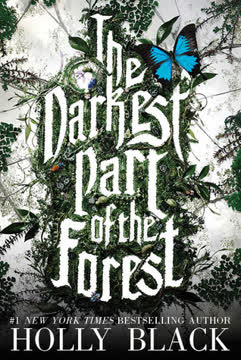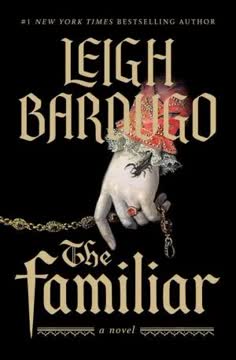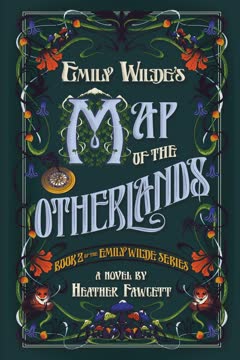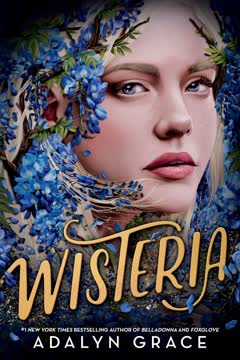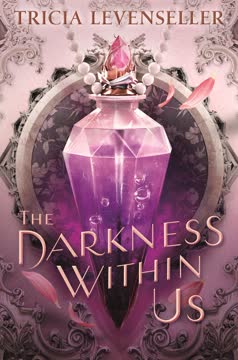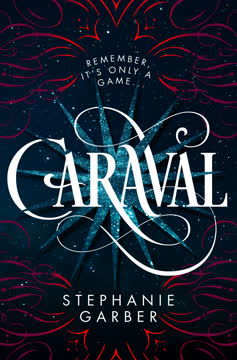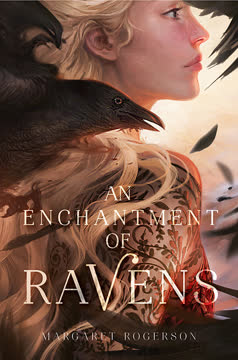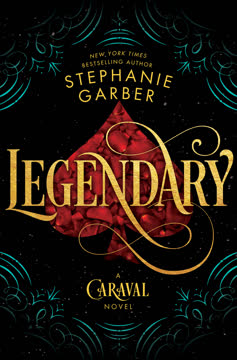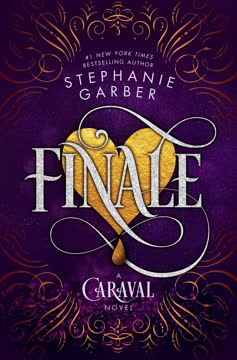Plot Summary
Glass Coffin's Secret Slumber
In the heart of Fairfold's haunted forest, a glass coffin holds a beautiful, horned boy, untouched by time or the wild parties of local teens. Siblings Hazel and Ben Evans, once inseparable, grew up weaving stories about rescuing him, dreaming of heroism and magic. The town, steeped in faerie lore, treats the coffin as both tourist attraction and warning. Hazel, now a restless teen, feels the weight of her failures—she hasn't saved the prince, nor her town, nor herself. The coffin's mystery lingers, a symbol of hope, danger, and the secrets that bind Fairfold's people to the Folk lurking in the woods.
Hazel's Bargain Unveiled
Years ago, Hazel made a secret bargain with the Folk: seven years of her life in exchange for her brother Ben's chance to attend a prestigious music school. The deal's terms were vague, and Hazel's childhood naivety left her vulnerable to faerie trickery. She assumed the years would be taken from the end of her life, but the Folk's magic is never so simple. Now, as the seven-year mark approaches, Hazel is haunted by warnings and mysterious messages, her memories unreliable, and her fate uncertain. The cost of her wish begins to manifest in lost time, muddy feet, and a growing sense of dread.
Siblings and Swords
Hazel and Ben, once united by their shared imagination and adventures, have grown apart. Ben's musical gift, a faerie blessing (or curse), isolates him, while Hazel's reputation as a heartbreaker masks her loneliness. Their parents, eccentric artists, are loving but distracted, leaving the siblings to navigate Fairfold's dangers alone. Hazel's longing for connection is complicated by secrets—her bargain, Ben's lost music, and the unspoken pain of their past. Their relationship is tested as the supernatural encroaches on their lives, forcing them to confront old wounds and the true meaning of loyalty.
The Prince Awakens
The unthinkable happens: the horned boy's glass coffin is shattered, and he vanishes into the woods. Panic and excitement ripple through Fairfold. Hazel and Ben, feeling responsible, set out to find him before the Folk or the townspeople do. Their childhood fantasies collide with reality as they realize the prince—Severin—is not a passive fairy-tale figure but a complex, dangerous being with his own agenda. The siblings' quest to find Severin rekindles their bond and thrusts them into the heart of Fairfold's ancient magic, where every choice has consequences.
Childhood Quests and Loss
As children, Hazel and Ben hunted monsters in the woods, believing themselves heroes. Their games turned deadly when Hazel discovered a murdered boy and faced a water hag, losing her beloved dog in the process. Armed with a mysterious golden sword, Hazel became a real knight, slaying faerie threats with Ben's magical music as her shield. But heroism comes at a cost: trauma, guilt, and the realization that some monsters can't be defeated. Their partnership fractures when Ben's music falters, and Hazel is left to face the darkness alone, her childhood dreams forever changed.
The Price of Music
Ben's faerie-given musical talent brings both adoration and misery. In Philadelphia, he falls in love, only to have his heart broken and his magic spiral out of control, hurting those around him. Desperate to stop, Ben injures his own hand, abandoning music and the life Hazel sacrificed for him. The siblings return to Fairfold, their roles reversed—Ben haunted by what he's lost, Hazel by what she's done. Their inability to communicate deepens their isolation, and the magic that once united them now threatens to destroy everything they love.
Nighttime Promises
Hazel's bargain with the Folk has unforeseen consequences: each night, while she sleeps, her other self serves the Alderking as a knight, trained in combat and faerie ways. By day, she remembers nothing, but clues—muddy footprints, cryptic notes—hint at her secret life. As the prince's awakening triggers chaos, Hazel's two selves begin to converge, blurring the line between hero and pawn. The realization that she may have freed Severin herself, and hidden the magical sword Heartsworn, forces Hazel to confront the truth about her identity and the price of her choices.
The Monster in the Woods
A monstrous creature, Sorrow, stalks the town, spreading magical despair and leaving victims in comas. Sorrow is revealed to be Severin's sister, transformed by grief after her mortal husband's death—a tragedy Severin himself caused. The Alderking, Severin's father, controls Sorrow with a bone ring, using her as a weapon against Fairfold. As the monster's influence grows, Hazel, Ben, and their friends race to find Heartsworn, the only blade that can harm her, and to unravel the tangled web of curses, bargains, and betrayals that bind their fates.
The Curse Breaks
The search for Heartsworn leads Hazel to the truth: she, as her night self, broke Severin's curse and hid the sword in the Alderking's court. With the help of Jack, a changeling torn between two worlds, Hazel confronts her own divided nature. The siblings and their allies infiltrate the faerie revel, facing the Alderking's wrath and the court's treacheries. As Hazel's memories return, she must reconcile her two selves and claim her power—not just as a knight, but as a whole person capable of love, regret, and forgiveness.
Revels and Revelations
At the faerie revel, Hazel and Jack navigate a world of beauty and danger, seeking answers from Jack's elf mother and the Alderking's courtiers. The truth about Jack's heritage, the origins of Sorrow, and the nature of the curse come to light. Hazel's night self leaves clues for her day self, guiding her toward Heartsworn and the means to save Fairfold. The revel tests their courage, loyalty, and the strength of their bonds, as old stories and new realities collide in a dance of fate and choice.
Jack's Hidden Heritage
Jack, raised as a human but born of the Folk, is caught between worlds. His presence in Fairfold is both a blessing and a curse, fueling the town's suspicion and the Alderking's vengeance. Jack's loyalty to his human family and friends is tested as the town turns against him, blaming him for the chaos. His relationship with Hazel deepens, offering both solace and risk. Ultimately, Jack must choose where he belongs and what he's willing to sacrifice for love, identity, and the hope of a future that bridges both worlds.
Sorrow's Grief Unleashed
Sorrow's rampage brings Fairfold to the brink of destruction. The monster's grief is a force of nature, infecting the town with hopelessness and pain. In a desperate confrontation, Ben uses his music to guide Sorrow through her sorrow, allowing her to regain her true self. The battle leaves the town shaken, but also reveals the depth of Ben's power and the possibility of redemption for even the most broken souls. The cost is high, but the victory is hard-won and transformative.
The Town Turns
In the aftermath of Sorrow's attack, the townspeople gather, desperate for someone to blame. Jack becomes the scapegoat, his otherness making him an easy target. Hazel and her friends stand by him, refusing to let fear dictate their actions. The town's willingness to sacrifice one of their own exposes the fragility of their peace and the dangers of prejudice. The crisis forces Fairfold to confront its own complicity in the bargains and secrets that have shaped its history.
The Alderking's Court
Hazel, Ben, Jack, and Severin are brought before the Alderking, who demands the return of Heartsworn and threatens unspeakable torment. Hazel's memories, restored by the Alderking's curse, reveal the full extent of her service and the sword's hiding place. In a climactic confrontation, Hazel retrieves Heartsworn, shatters the Alderking's power, and frees Sorrow from his control. The court's old order collapses, and new possibilities emerge for both mortals and Folk.
The Sword's True Hiding
Guided by her own cryptic clues, Hazel finds Heartsworn buried in the stone of the Alderking's throne room. The sword, a symbol of her agency and sacrifice, becomes the key to defeating the Alderking and ending the cycle of violence. Hazel's courage and ingenuity, forged through years of struggle, allow her to reclaim her story and shape her own destiny. The act of retrieval is both a triumph and a reckoning with the past.
The Final Confrontation
In the final battle, Hazel uses Heartsworn to destroy the Alderking's control over Sorrow, freeing her from the bone ring and ending the threat to Fairfold. Severin, wounded but unbroken, confesses his love for Ben, and the bonds of friendship and family prove stronger than any curse. The Alderking is defeated, his power broken, and the court is left to rebuild. Hazel, now whole, faces the future with hard-won wisdom and hope.
Remembering Everything
The Alderking's dying curse restores all of Hazel's memories, forcing her to confront the full truth of her actions, bargains, and betrayals. The weight of her choices is heavy, but so is the knowledge that she is more than the sum of her mistakes. Hazel's journey from fractured hero to integrated self is painful but necessary, allowing her to forgive herself and embrace the complexity of her identity. The past cannot be changed, but the future is hers to shape.
New Beginnings, Old Wounds
With the Alderking gone and Sorrow restored, Fairfold begins to heal. Ben chooses to stay in Faerie, seeking mastery over his music and a future with Severin. Jack, finally at peace with his dual heritage, remains in Fairfold, forging a new path with Hazel. The town, forever changed, must learn to live with the magic in its midst. Hazel, scarred but stronger, steps into her new life—no longer just a knight or a girl with secrets, but a young woman who has faced the darkest part of the forest and found her way home.
Characters
Hazel Evans
Hazel is the story's fierce, impulsive protagonist, driven by a longing for heroism and belonging. As a child, she hunted monsters with her brother, wielding a magical sword and dreaming of saving the horned boy. Her secret bargain with the Folk—trading seven years of her life for Ben's musical future—sets her on a path of sacrifice and self-doubt. Hazel's double life as the Alderking's knight, unknown even to herself, fractures her identity. She is both brave and reckless, compassionate and guilt-ridden, struggling to reconcile her day and night selves. Her journey is one of self-forgiveness, agency, and the acceptance that true heroism means facing one's own darkness and choosing love over fear.
Ben Evans
Ben, Hazel's older brother, is marked by a faerie's touch—his musical talent is both a blessing and a curse. Sensitive, creative, and deeply empathetic, Ben's longing for connection is complicated by the magic that isolates him. His relationship with Hazel is central: they are partners, rivals, and each other's greatest source of pain and comfort. Ben's struggles with love, identity, and the consequences of his gift mirror Hazel's own journey. Ultimately, Ben's music becomes a force for healing, guiding Sorrow through her grief and helping to save Fairfold. His decision to remain in Faerie reflects his desire to master his power and find a place where he truly belongs.
Severin (The Horned Boy)
Severin, the horned boy of legend, is both victim and agent of the story's central conflict. Beautiful, enigmatic, and dangerous, he is the son of the Alderking and a wild faerie, forever caught between worlds. His awakening shatters the fragile peace of Fairfold, setting off a chain of events that force the characters to confront their deepest fears and desires. Severin's guilt over his sister Sorrow's fate, his longing for acceptance, and his capacity for love—especially for Ben—make him a complex, sympathetic figure. His journey from cursed object to active participant is one of redemption and self-acceptance.
Jack Gordon
Jack, swapped at birth with a human child, is raised as a boy in Fairfold but is always marked as other. His struggle for belonging, loyalty to his human family, and secret connection to the Folk make him both vulnerable and powerful. Jack's relationship with Hazel is tender and fraught, offering both the possibility of love and the risk of heartbreak. His ability to command magic, inherited from his faerie mother, becomes crucial in the fight against the Alderking. Jack's ultimate choice—to remain in Fairfold and claim his place in both worlds—embodies the story's themes of identity, acceptance, and the courage to be oneself.
Sorrow (Sorrel)
Sorrow, once Sorrel, is transformed by the loss of her mortal husband into a creature of despair and destruction. Her rampage threatens to destroy Fairfold, but beneath the monstrous exterior is a soul longing for release. Sorrow's story is one of love, loss, and the corrosive power of grief. Her redemption, guided by Ben's music and Severin's compassion, is a testament to the possibility of healing even the deepest wounds. Sorrow embodies the dangers of unchecked emotion and the hope that even monsters can be saved.
The Alderking
The Alderking, ruler of the Folk and Severin's father, is the story's primary antagonist. Charismatic, cruel, and obsessed with power, he manipulates those around him—controlling Sorrow, cursing Severin, and exploiting Hazel's bargain. His inability to love or forgive drives the tragedy at the heart of the story. The Alderking's defeat is both a personal and communal victory, freeing Fairfold from his tyranny and allowing new possibilities to emerge. He represents the dangers of unchecked authority and the necessity of challenging old, destructive orders.
Eolanthe (Jack's Elf Mother)
Eolanthe, Jack's faerie mother, is a figure of both power and vulnerability. Her decision to leave Jack with humans, her complicated relationship with the Alderking, and her ambiguous loyalties make her a pivotal character. Eolanthe's actions are driven by a desire to protect her son, even at great personal cost. Her presence in the story highlights the complexities of family, the pain of exile, and the sacrifices required by love.
Carter Gordon
Carter, Jack's human "twin," is a grounding presence in the story. Athletic, popular, and loyal, he represents the life Jack might have had and the acceptance he craves. Carter's willingness to stand by Jack, even as the town turns against him, underscores the importance of chosen family and the power of solidarity in the face of fear.
Fairfold (The Town)
Fairfold is more than a backdrop—it is a living, breathing entity shaped by its bargains with the Folk. The town's traditions, superstitions, and willingness to sacrifice outsiders for its own safety reflect the dangers of insularity and the costs of complicity. Fairfold's transformation over the course of the story mirrors the characters' journeys, moving from denial and fear to acceptance and change.
The Folk (Faerie Court)
The Folk, with their beauty, cruelty, and capriciousness, embody the seductive dangers of magic. They are both antagonists and allies, shaping the destinies of the human characters through bargains, curses, and gifts. The court's collapse at the story's end signals the possibility of a new order, one in which mortals and faeries might coexist on different terms.
Plot Devices
Duality and Double Lives
The story's central device is Hazel's double life: by day, a normal girl; by night, the Alderking's knight, her memories hidden from herself. This duality creates tension, mystery, and a sense of inevitability as clues left by her night self guide her day self toward the truth. The device allows for dramatic irony, as the reader gradually uncovers the full scope of Hazel's actions and the consequences of her bargain. The convergence of Hazel's two selves in the climax is both a personal and narrative resolution, symbolizing the integration of past and present, guilt and agency.
Curses, Bargains, and Prophecy
The plot is propelled by a web of bargains—Hazel's deal for Ben's music, Severin's curse, Sorrow's transformation, Jack's changeling exchange. Each bargain is fraught with ambiguity, reflecting the Folk's love of loopholes and the dangers of wishing for more than one understands. Prophecies and warnings (the walnut messages, the "seven years" riddle) create suspense and foreshadow key revelations. The breaking and fulfillment of these bargains drive the characters toward confrontation and, ultimately, liberation.
Foreshadowing and Symbolism
The glass coffin, the golden sword, the monster in the woods, and the repeated references to stories and songs all serve as symbols of hope, danger, and the power of narrative. Foreshadowing is woven throughout—Hazel's lost time, Ben's fear of his music, Jack's unease with his heritage—building a sense of inevitability and interconnectedness. The story's structure, moving from childhood innocence to adult reckoning, mirrors the journey from fantasy to reality, from escapism to acceptance.
Narrative Structure and Perspective
The novel's structure alternates between present action, flashbacks, and recovered memories, creating a layered, nonlinear narrative. This approach allows for gradual revelation, as the truth about Hazel's bargain, Severin's curse, and Sorrow's origin emerges piece by piece. The shifting perspectives—Hazel, Ben, Jack, Severin—offer insight into each character's motivations and fears, fostering empathy and complexity.
The Power of Storytelling
Throughout the novel, characters use stories to make sense of their world, to comfort themselves, and to shape their destinies. Ben's tales about the horned boy, Hazel's fantasies of knighthood, and the town's collective myths all reflect the human need for narrative. The act of telling and retelling stories becomes a means of survival, resistance, and, ultimately, transformation.
Analysis
Holly Black's The Darkest Part of the Forest is a modern fairy tale that interrogates the boundaries between myth and reality, heroism and complicity, self and other. At its heart, the novel is about the costs of bargains—what we sacrifice for love, talent, or belonging—and the dangers of denying our own darkness. Through Hazel's fractured identity, Ben's struggle with his gift, Jack's search for acceptance, and Severin's quest for redemption, the story explores the complexities of growing up in a world where magic is both wondrous and perilous. The novel challenges the notion of simple heroism, insisting that true courage lies in facing one's own flaws, making amends, and choosing connection over isolation. The integration of day and night selves, the breaking of old curses, and the forging of new alliances all point toward a future in which the characters—and their town—can move beyond fear and secrecy. Ultimately, the book is a celebration of agency, forgiveness, and the transformative power of love and story, reminding readers that even in the darkest part of the forest, hope can be found.
Last updated:
Review Summary
The Darkest Part of the Forest receives mostly positive reviews, praised for its atmospheric writing, intriguing plot, and well-developed characters. Readers appreciate the dark fairy tale elements, diverse representation, and subversion of fantasy tropes. Many consider it one of Holly Black's best works, highlighting its standalone nature and engaging storyline. Some criticisms include pacing issues and underdeveloped plot points. Overall, reviewers recommend it for fans of YA fantasy and faerie lore, with many expressing a desire for more stories set in this world.
